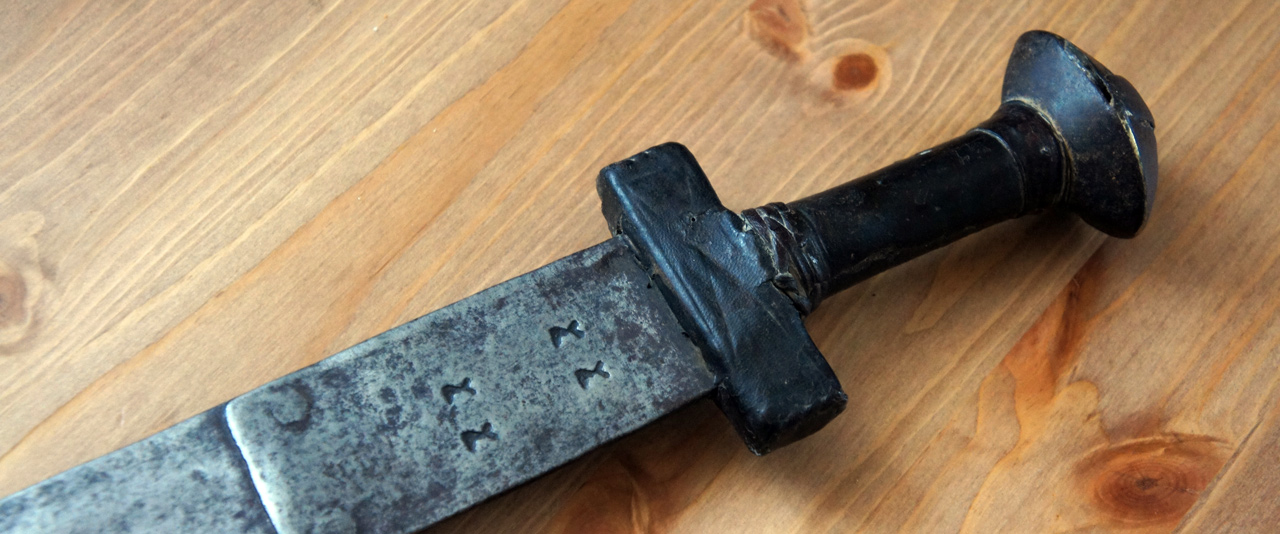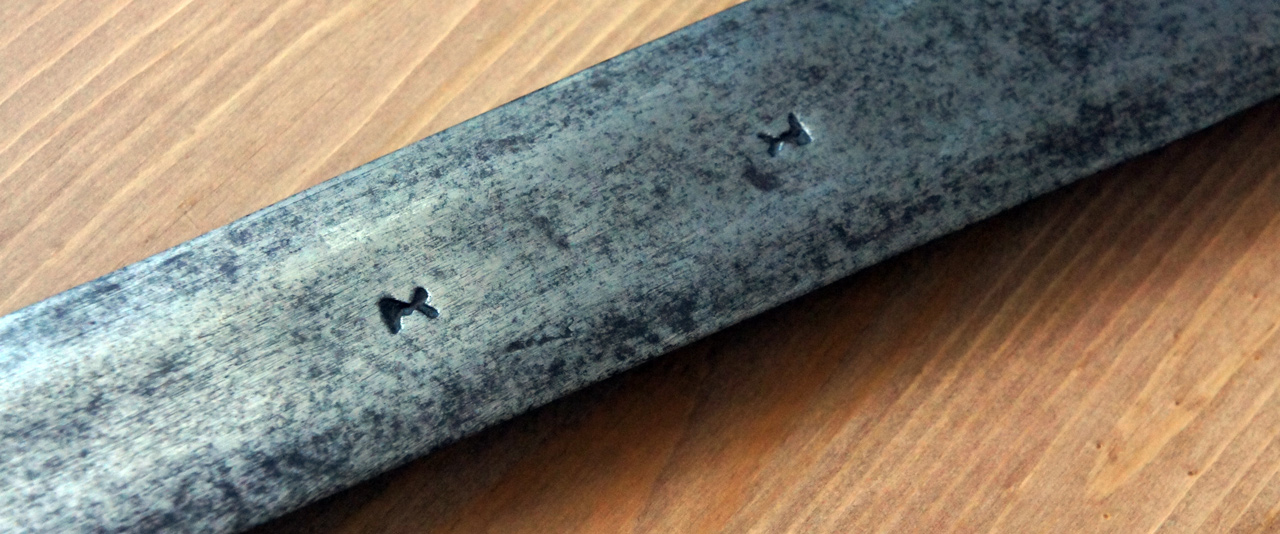
The Authentic Fake
October 9, 2023 African Arms
One of the most interesting features of ethnographic swords which have a long history of using imported blades is that the locally made blades tend to closely emulate the imports, both in style and the markings applied. Over time it is not inaccurate to say that the form of takouba and kaskara, as well as many West African swords, owes more to the blades imported and then copied, than to any locally derived shape.
Marks in particular were widely copied, seen as identifiers of known quality. This habit led to a number of common patterns and marks being produced within Africa with various levels of refinement during at least the 19th century and likely before as well. Common patterns imported became the common form produced locally as well.
The extremely typical triple fuller pattern with two half moon marks is perhaps the best example of this. It is a ubiquitous design in the Sahel. Some examples are of a quality good enough to fool the casual observer into thinking they are the genuine European article. None of this is a slight on the skills and capabilities of native smiths and armourers.
Their replication of European blades is the product of clever marketing and the demands of the buying public rather than a lack of ability to produce differing blade forms. As I've detailed on this site in the past, unique local forms do exist, even if they are in the minority.
However rather than look at one the triple fullers, the sword above is a little more interesting. The blade seems to be of entirely native make but has seen quite a bit of use, it has been remounted in the "sandwich" forte style. But that's not the intriguing part! The blade has two marks applied, but the same marks are replicated on the new forte, meaning we can be sure they are all native applications.

The mark is an interesting hourglass shape which is likely an attempt to replicate or at least imitate the Italian "fly" marking commonly found on schiavona and similar blades as can be seen on the Italian blade I own, the mark pictured below.

This effort to replicate the mark and place it so many times on the blade and forte indicates the value that was associated with European blade stamps and markings. Certainly a sense of quality was derived from such signs.
While we know that marks such as the lion were given their own local talismanic values, this mark seems too obscure and abstract for that purpose. Leaving us with the conclusion that this is one of the highly enjoyable contradictions of Sahel arms, an authentic fake.